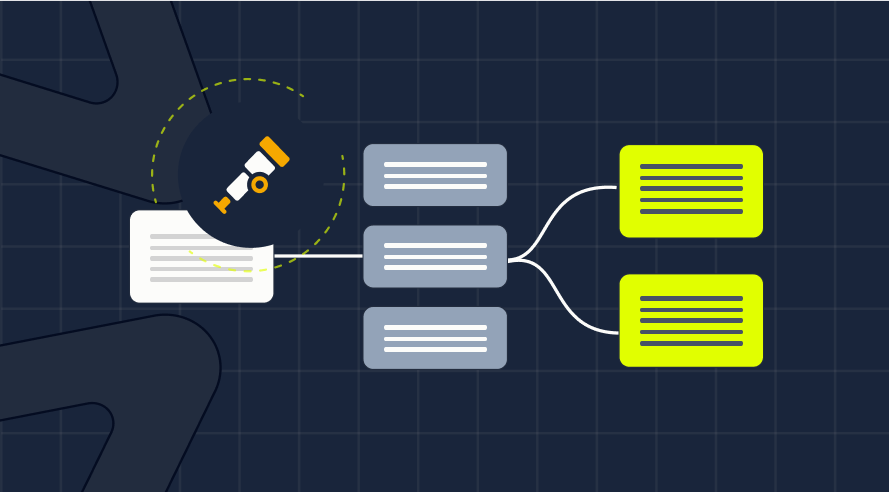Introduction to OpenTelemetry (OTel)
OpenTelemetry is an open-source observability framework designed to collect, instrument, and export telemetry data from software applications, systems, and infrastructure.
OpenCensus and OpenTracing
OpenTelemetry builds upon the success of two previous observability projects, OpenCensus and OpenTracing, and combines them into a unified, standardized solution. This merger provides comprehensive support for both metrics and traces.
Vendor-Agnostic Observability
OpenTelemetry offers vendor-agnostic observability, allowing compatibility with various observability tools and services. This flexibility enables organizations to choose the best-in-class solutions that suit their needs and avoid vendor lock-in.
Key Components of OpenTelemetry

OpenTelemetry consists of several key components that work together to capture and export telemetry data. These components include instrumentation, the OpenTelemetry collector, and support for metrics, traces, and logs.
Instrumentation
Instrumentation involves adding code to applications to collect relevant data. OpenTelemetry provides libraries and SDKs in multiple programming languages to make instrumentation consistent and easy for developers.
OpenTelemetry Collector
The OpenTelemetry collector acts as an intermediary between instrumented applications and the backend systems responsible for storing, analyzing, and visualizing telemetry data. It supports various protocols and export formats for seamless integration with observability platforms.
Metrics, Traces, and Logs
OpenTelemetry supports three main types of telemetry data: metrics, traces, and logs. Metrics provide quantitative measurements of the system’s behavior, traces capture the complete lifecycle of requests, and logs offer a chronological record of events and messages.
Pluggable Architecture and Integrations
OpenTelemetry follows a pluggable architecture, allowing users to customize and extend its functionality. It supports integrations with popular frameworks, libraries, and cloud-native technologies, enabling seamless integration with existing technology stacks.
Benefits of Adopting OpenTelemetry
Adopting OpenTelemetry offers several benefits for organizations:
1. Consistent Observability Approach
OpenTelemetry enables a consistent observability approach across heterogeneous systems, simplifying troubleshooting, monitoring, and performance analysis in complex environments.
2. Shift-Left Observability
OpenTelemetry facilitates the integration of observability into the development process, allowing developers to instrument their code and gain insights without relying on separate monitoring teams or specialized knowledge.
3. Vendor Neutrality
OpenTelemetry promotes vendor neutrality and avoids lock-in by allowing organizations to choose the best-in-class tools for metrics storage, log analysis, and distributed tracing.
4. Collaboration and Innovation
OpenTelemetry fosters collaboration and innovation within the observability community by providing a common framework for sharing best practices, developing integrations, and improving existing tooling.
The Importance of Observability
Observability is a critical aspect of modern software development and operations. It refers to the ability to understand and monitor complex systems by collecting and analyzing relevant data. In today’s highly distributed and interconnected environments, traditional monitoring approaches fall short of providing comprehensive insights into system behavior and performance. This is where observability comes into play.
The Pillars of Observability
Observability goes beyond basic monitoring by focusing on three key pillars: metrics, traces, and logs. These pillars collectively provide a holistic view of a system’s internal state, interactions, and performance.
Let’s explore the importance of each pillar in more detail:
1. Metrics
Metrics are quantitative measurements that provide insights into the behavior of a system over time. They can include information such as resource utilization, error rates, response times, throughput, and more. Metrics are crucial for understanding the overall health and performance of a system, as well as identifying trends and anomalies that may require attention. By monitoring metrics, organizations can proactively detect issues, optimize resource allocation, and ensure smooth operations.
2. Traces
Traces capture the complete lifecycle of a request as it flows through different components and services in a distributed system. They provide visibility into the dependencies, bottlenecks, and latencies within the system. Traces are especially valuable in complex architectures where requests may traverse multiple services, databases, and network boundaries. By analyzing traces, organizations can pinpoint performance bottlenecks, optimize critical paths, and troubleshoot issues related to latency or errors. Traces enable developers and operators to gain a deep understanding of how requests propagate through their systems, enabling effective troubleshooting and optimization.
3. Logs
Logs are textual records of events and messages generated by an application or system. They provide a chronological record of activities, including errors, warnings, user actions, and system events. Logs are essential for debugging, troubleshooting, and auditing purposes. They enable developers and operators to investigate specific incidents, trace the execution flow, and identify the root causes of issues. Analyzing logs helps understand an event’s context, which is valuable for diagnosing complex problems, meeting compliance requirements, and ensuring system reliability.
The combination of three pillars provides a comprehensive solution that lets teams effectively monitor, troubleshoot, and optimize their systems.
Uses of Observability
Observability plays a vital role in various scenarios, including:
- Performance Optimization: Observability allows organizations to identify performance bottlenecks, optimize critical paths, and improve resource utilization. By leveraging metrics and traces, developers and operators can identify areas for optimization, fine-tune configurations, and make data-driven decisions to enhance system performance.
- Troubleshooting and Root Cause Analysis: When incidents occur, observability helps in quickly identifying the root causes and understanding the impact of failures. By analyzing metrics, traces, and logs, organizations can trace the flow of requests, identify failing components, and investigate the sequence of events leading to an issue. This accelerates the troubleshooting process and minimizes the mean time to resolution (MTTR).
- Capacity Planning and Scaling: Observability provides insights into resource utilization and system behavior, enabling organizations to make informed decisions about capacity planning and scaling. By monitoring metrics, organizations can detect trends and patterns, forecast future resource needs, and scale their infrastructure proactively to handle increased demand or mitigate potential bottlenecks.
- Compliance and Auditing: Observability helps organizations meet compliance requirements by providing an audit trail of activities. By collecting and analyzing logs, organizations can demonstrate adherence to security and regulatory standards, track user actions, and ensure data integrity.
Making OpenTelemetry Actionable
Helios is a dev-first observability platform that helps Dev and Ops teams shorten the time to find and fix issues in distributed applications. Built on OpenTelemetry, Helios provides traces and correlates them with logs and metrics, enabling end-to-end app visibility and faster troubleshooting.
By exporting OTeL data to Helios, developers can make better sense out of their tracing data, with visibility and actionable insights that accelerate troubleshooting. For example, Helios can automatically collect DB queries, resulting in less time writing logs. Helios also provides an auto-generated service map for onboarding and helping teams understand what needs to be fixed where, drills down into logs and traces analysis for faster resolution and automates the test creation process, cutting it down from days to hours.













